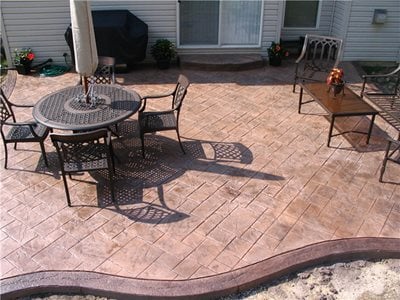There’s more to a successful stamped concrete project than finding a contractor and writing a check. Follow these six steps to get the make sure you get the right stamped concrete for your home or business:

1. Before more in-depth planning, it is important to answer a few key questions. First and foremost, a maximum budget needs to be set. From there, you should find a general timeframe – this is especially important if the stamped concrete project is part of a larger renovation. Remember that many contractors are busy, with some scheduling jobs as far as a year in advance. From here, you should consider selecting a contractor.
2. Consider limiting factors and logistical concerns. An experienced concrete contractor should be able to help with this. Some common issues include:
3. Get a general sense of the design. This is where the “look and feel” is decided. Chances are, you have already given this subject thought and that is how you decided on stamped concrete. Choose a general style that works with the house and surrounding properties. Select a handful of colors that would make sense with the texture (browns with wood patterns, grays and tans with stone, reds and browns with brick, etc.).
4. Make final texture and color choices with your contractor. Final selections may depend, at least in part, on what colors and textures your contractor offers in his portfolio. At this stage, your contractor may offer additional guidance based on his experience. It is generally a good idea to listen to this input.

5. When placement begins, follow your contractor’s instructions. Any requests during the duration of the project should be aimed at ensuring the best possible end product. A good contractor should prepare you by informing you of your responsibilities.
6. Before completing the project, your contractor should instruct you on the maintenance requirements of your new stamped concrete. Most stamped concrete will need to be regularly cleaned with re-sealing every two to three years.
By taking a little bit of time to plan, you can enjoy spectacular stamped concrete for years to come. For ideas, view our galleries or visit sites such as ConcreteNetwork.com.
Explore impressive concrete installations to find inspiration for your next project.
Find out how much color and fiber you'll need for any size project.